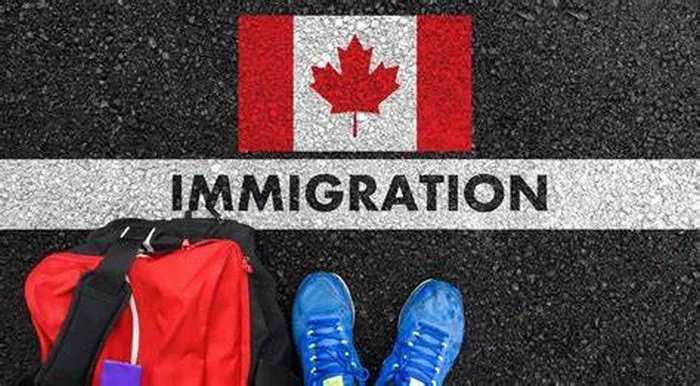In an increasingly interconnected world, Canada stands out as a beacon for immigrants seeking new opportunities. With a robust economy, diverse industries, and a high quality of life, it’s no surprise that many individuals from around the globe aspire to work in Canada. However, achieving this dream requires navigating through Canada’s immigration system, which includes obtaining the necessary work visa.
Understanding Canadian Work Visas
Canada offers several types of work visas, each designed to accommodate different circumstances and categories of workers. The type of visa you apply for depends on factors such as your intended occupation, duration of stay, and whether you have a job offer from a Canadian employer.
Types of Canadian Work Visas
1. Temporary Work Permits:
Open Work Permits: Allow you to work for any employer in Canada and do not require a Labour Market Impact Assessment (LMIA).
Employer-Specific Work Permits: Tie you to a specific employer and usually require an LMIA to demonstrate that hiring a foreign worker will not negatively impact the Canadian labor market.
2. Permanent Residency through Work:
Express Entry System: Points-based system for skilled workers applying for permanent residence.
Provincial Nominee Programs (PNPs): Offer pathways to permanent residency for workers nominated by a specific Canadian province.
Steps to Obtain a Canadian Work Visa
1. Determine Your Eligibility
Before applying for a Canadian work visa, assess which visa category suits your situation best. Factors to consider include:
Job Offer: Do you have a job offer from a Canadian employer?
LMIA Requirement: Does your job require an LMIA?
Skill Level: Is your occupation classified as high-skilled, low-skilled, or intermediate-skilled?
Duration: Is your job temporary or permanent?
2. Obtain a Job Offer (if required)
For most employer-specific work permits, you’ll need a job offer from a Canadian employer. The employer may need to obtain an LMIA from Employment and Social Development Canada (ESDC), unless an exemption applies (e.g., NAFTA professionals under USMCA).
3. Employer Applies for an LMIA (if required)
If an LMIA is required, the Canadian employer must apply to ESDC. The process involves proving that no Canadian citizen or permanent resident is available to fill the position and that hiring a foreign worker will not negatively affect the Canadian labor market.
4. Gather Required Documents
Prepare all necessary documents for your visa application. Typical documents include:
Passport: Valid for the duration of your stay.
Job Offer Letter: Detailing your job title, duties, salary, and conditions of employment.
LMIA (if applicable): Copy of the positive LMIA or the LMIA exemption confirmation.
Proof of Qualifications: Educational certificates, diplomas, or licenses relevant to your occupation.
Police Certificates: Certifying that you have no criminal record (if required).
Medical Examination: Depending on your country of origin and the duration of your stay.
Proof of Funds: Evidence that you can support yourself and any accompanying family members during your stay in Canada.
SEE ALSO: HOW TO TRACK YOUR VISA APPLICATION FOR CANADA?
5. Submit Your Application
Apply online or through a visa application center (VAC) designated by the Canadian government. Pay the application fee and submit your completed application along with the required documents.
6. Wait for Processing
Processing times vary depending on the type of work visa and your country of residence. Check the current processing times on the Immigration, Refugees and Citizenship Canada (IRCC) website.
7. Receive a Decision
Once your application is processed, you will receive a decision on your work visa application. If approved, you will receive a Port of Entry (POE) Letter of Introduction or a temporary resident visa (TRV) in your passport.
8. Arrive in Canada and Begin Working
Upon arrival in Canada, present your POE Letter of Introduction (if applicable) to the Canada Border Services Agency (CBSA). The officer will issue your work permit allowing you to legally work in Canada.
Tips for a Successful Application
Start Early: Begin the application process well in advance of your intended travel date to Canada.
Double-Check Documents: Ensure all required documents are accurate, up-to-date, and properly prepared.
Follow Instructions Carefully: Review the application guide and follow all instructions provided by IRCC.
Consult with Immigration Experts: Consider seeking advice from immigration consultants or lawyers specializing in Canadian immigration law.
Conclusion
Obtaining a Canadian work visa can be a complex process, but with thorough preparation and understanding of the requirements, you can navigate it successfully. Whether you are applying for a temporary work permit or seeking permanent residency through work, Canada offers numerous opportunities for skilled workers from around the world. By following the steps outlined in this guide and staying informed about updates to immigration policies, you can pursue your career aspirations in Canada with confidence.
Canada’s welcoming stance towards immigrants and commitment to a diverse workforce make it an attractive destination for professionals seeking new opportunities and a high quality of life. As you embark on your journey to work in Canada, remember that thorough research and careful preparation are key to achieving your goal of obtaining a Canadian work visa.


